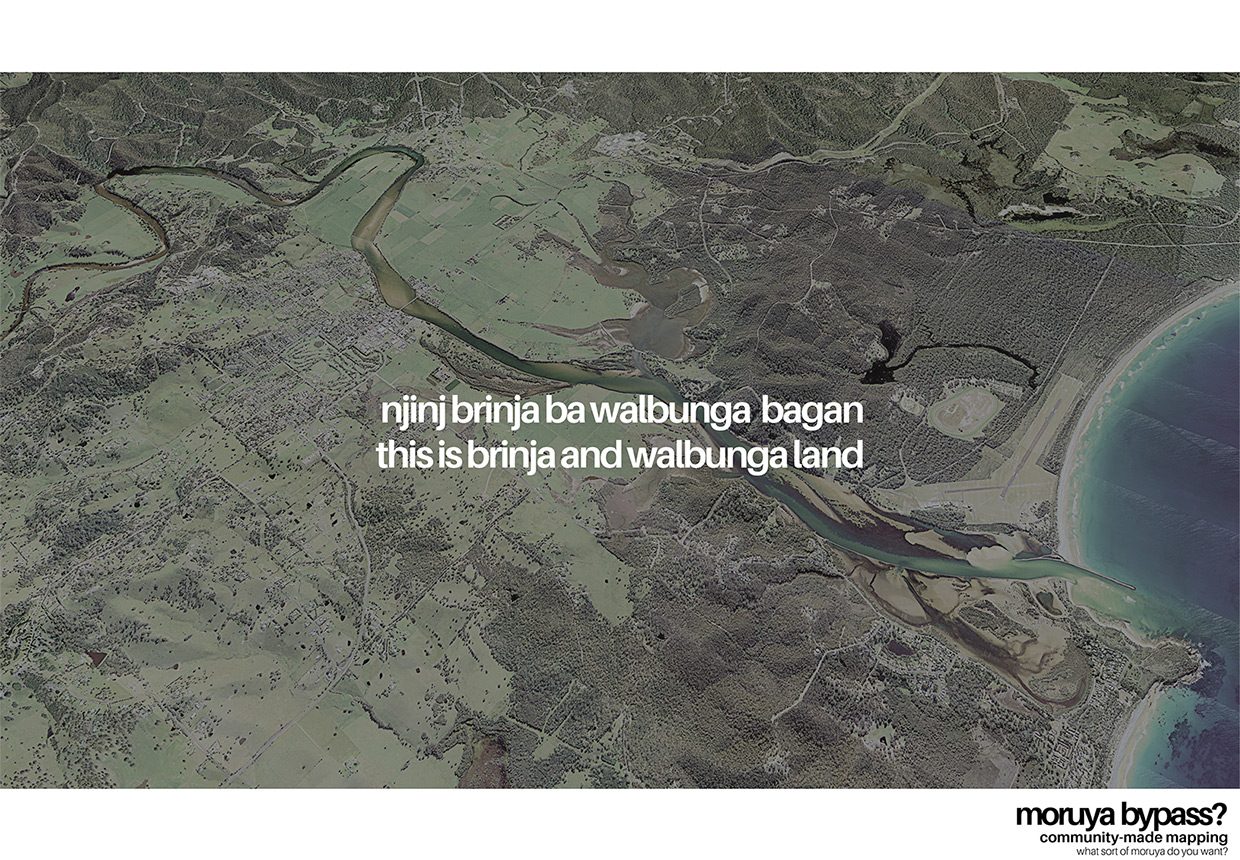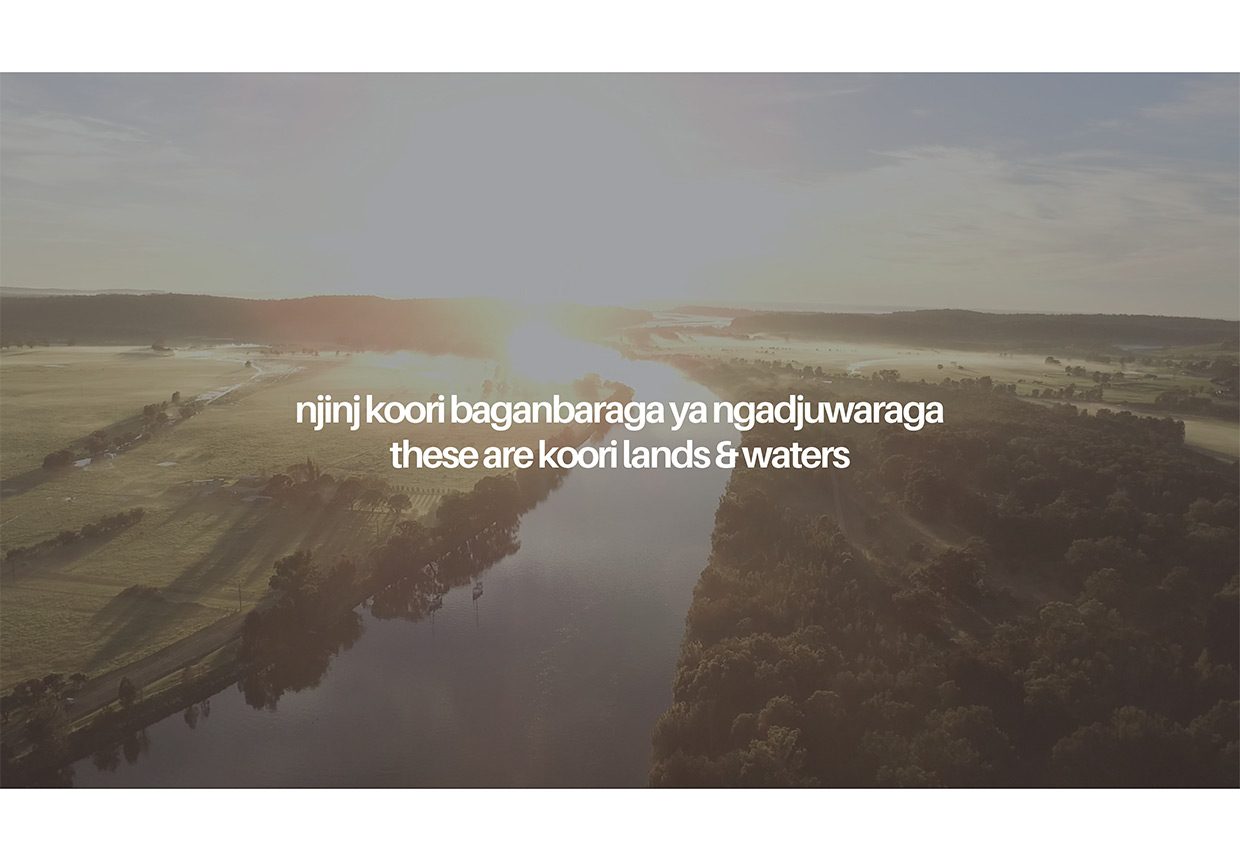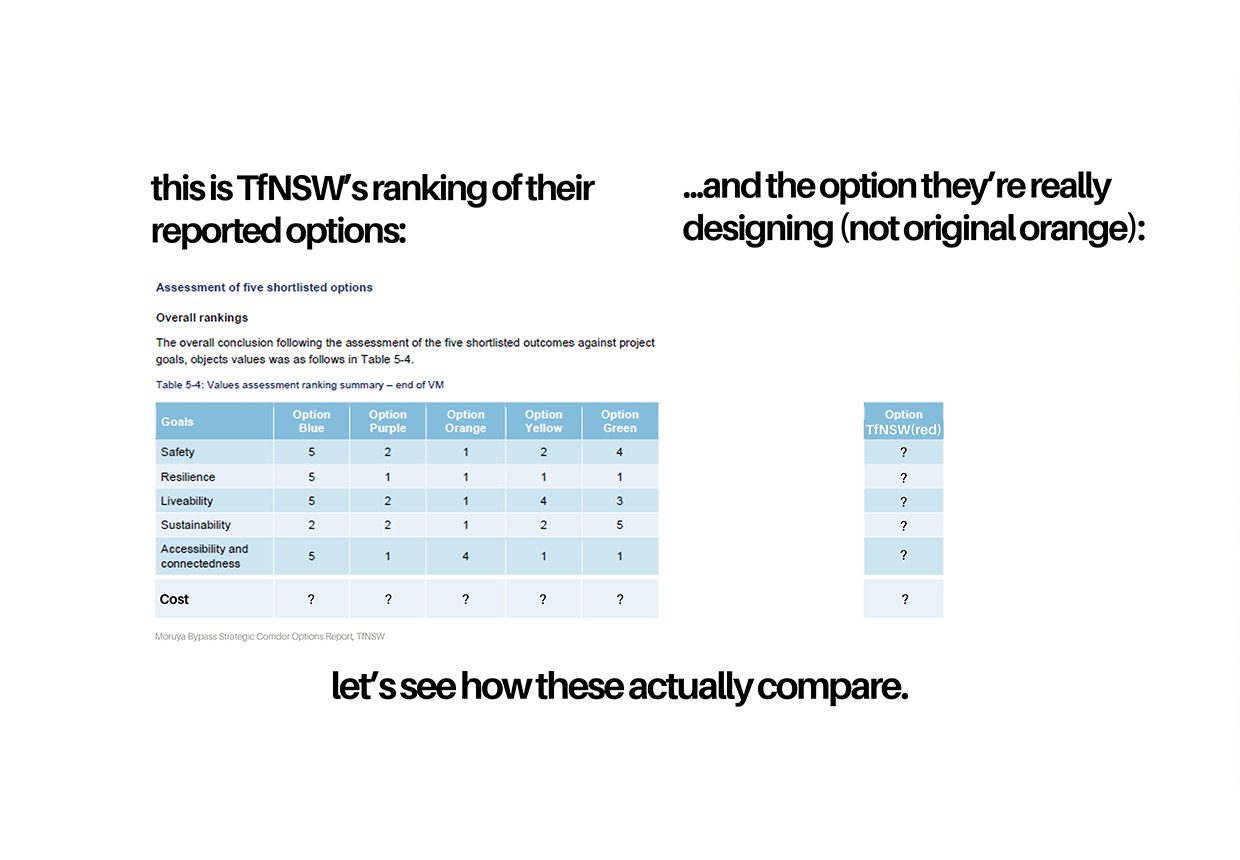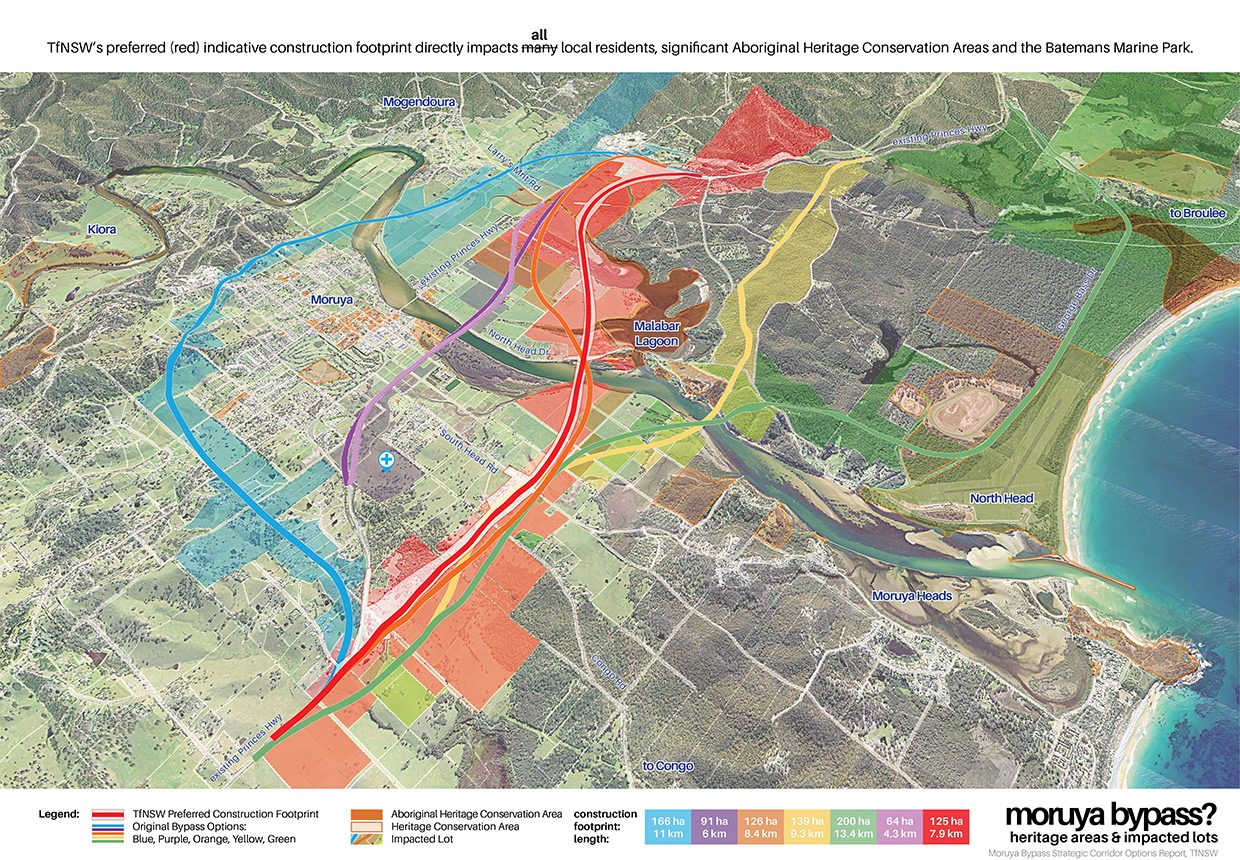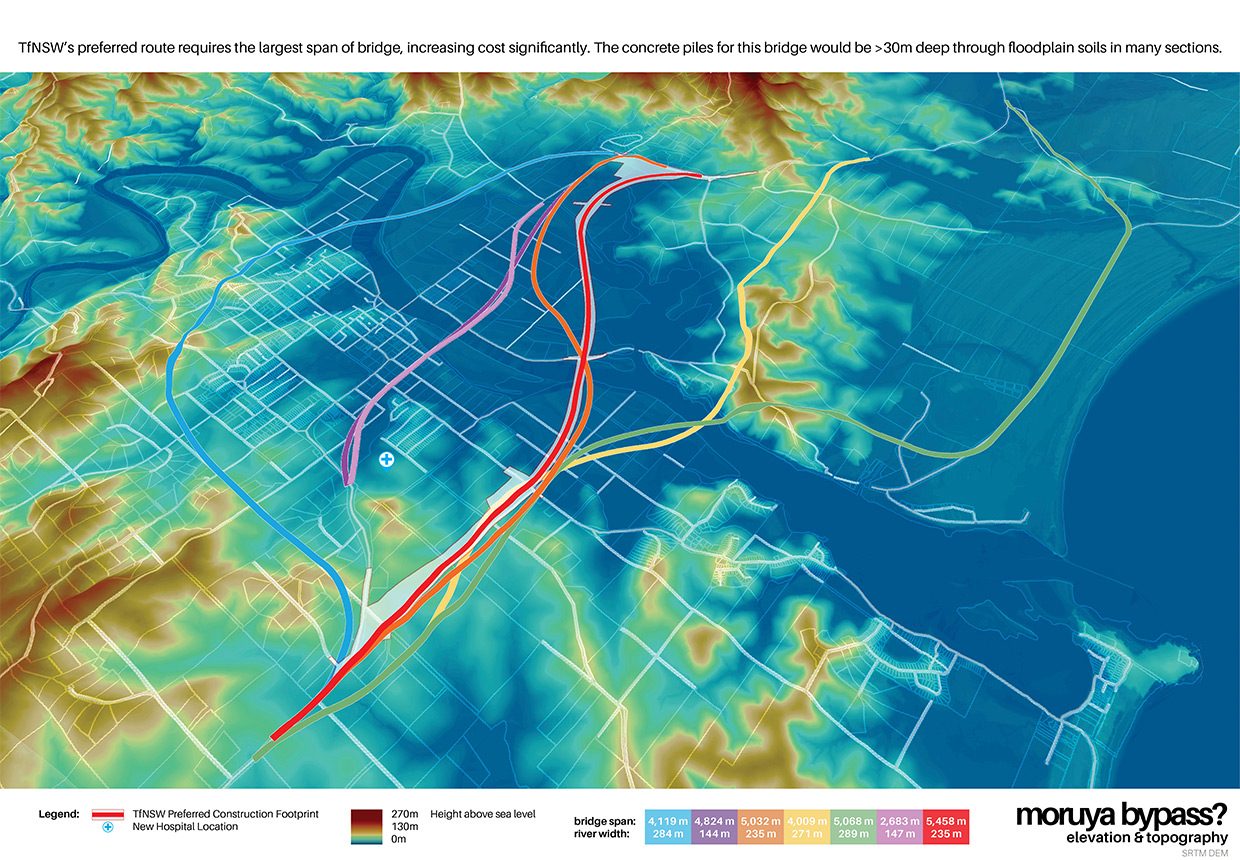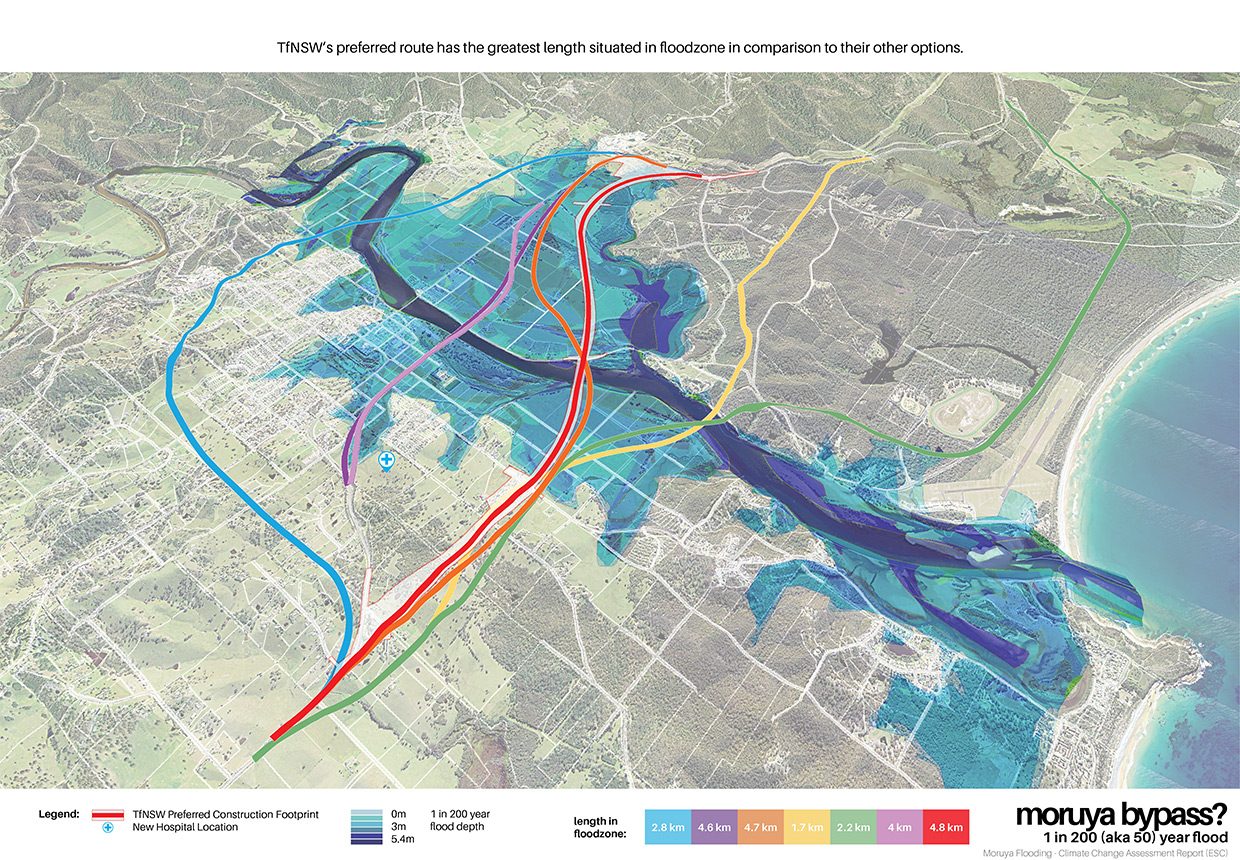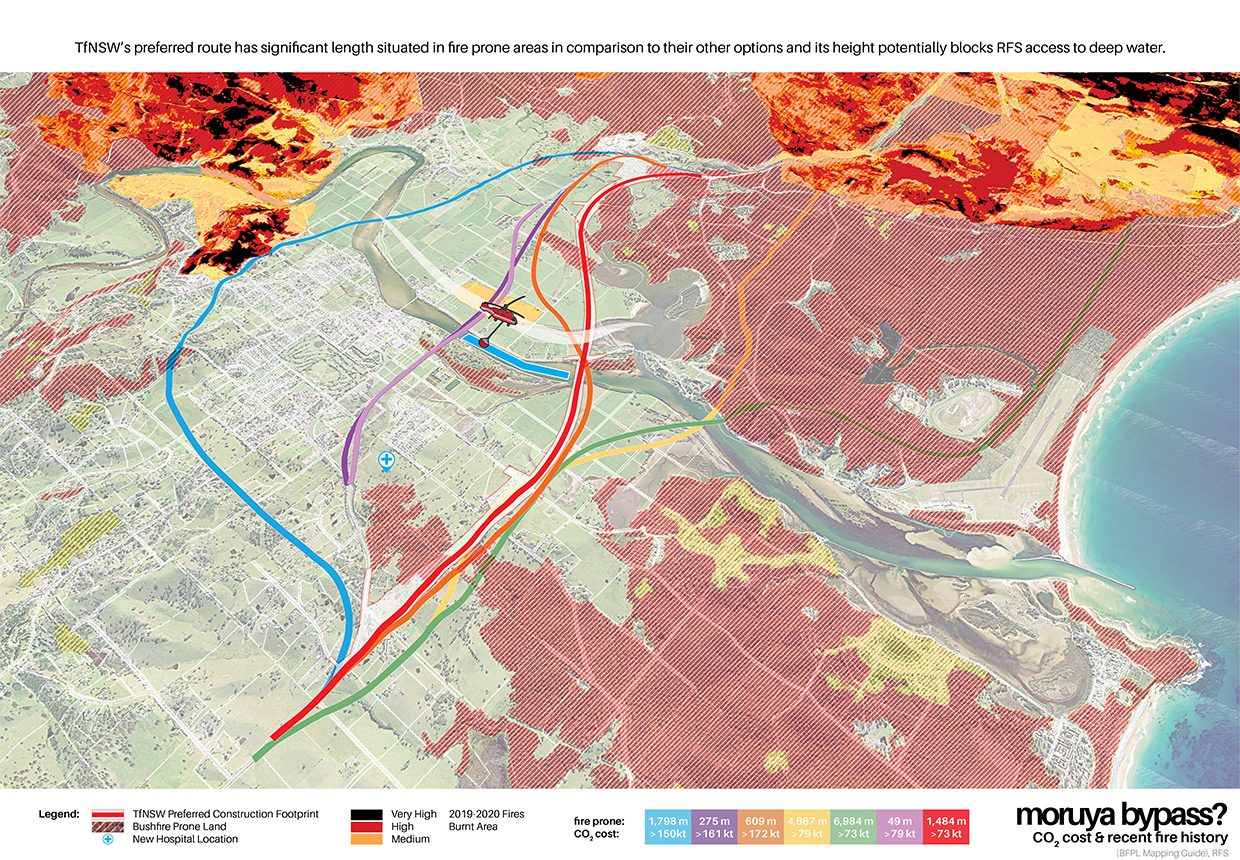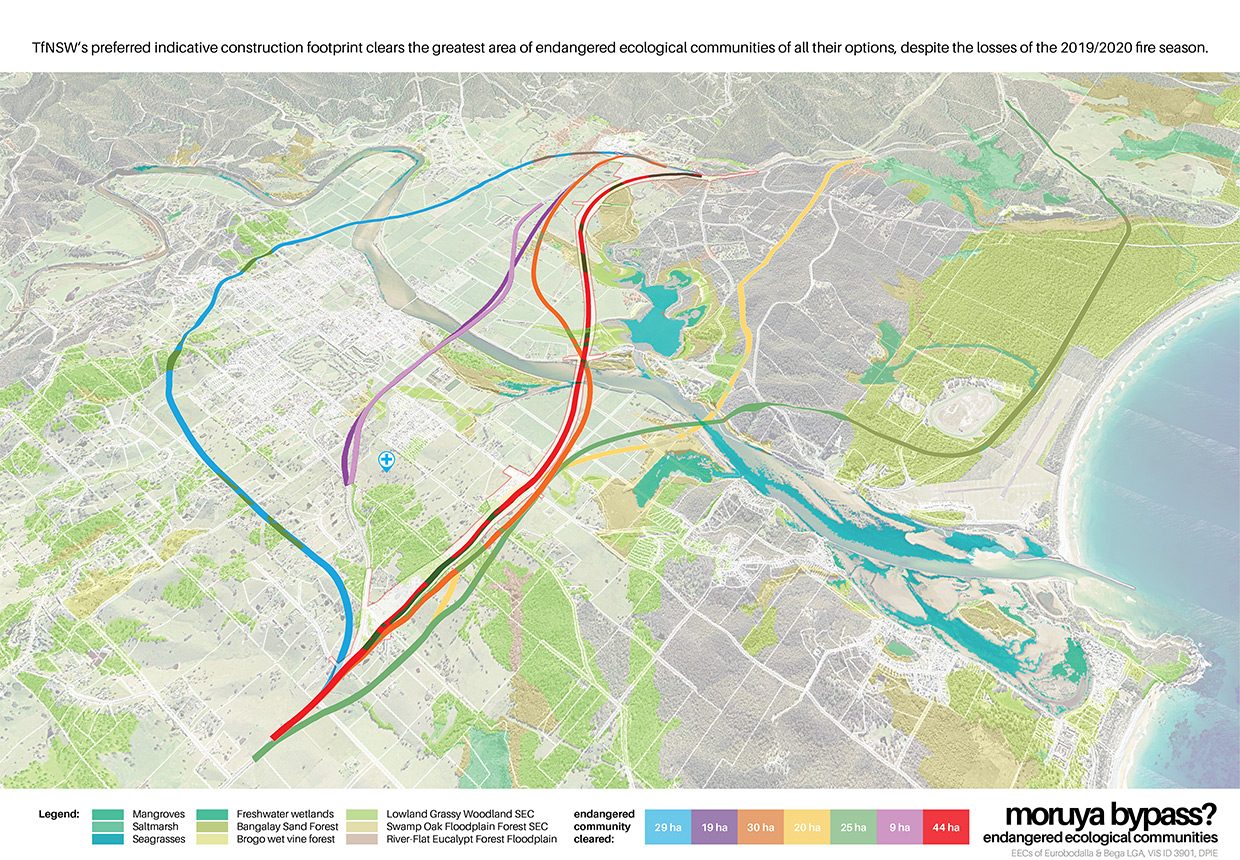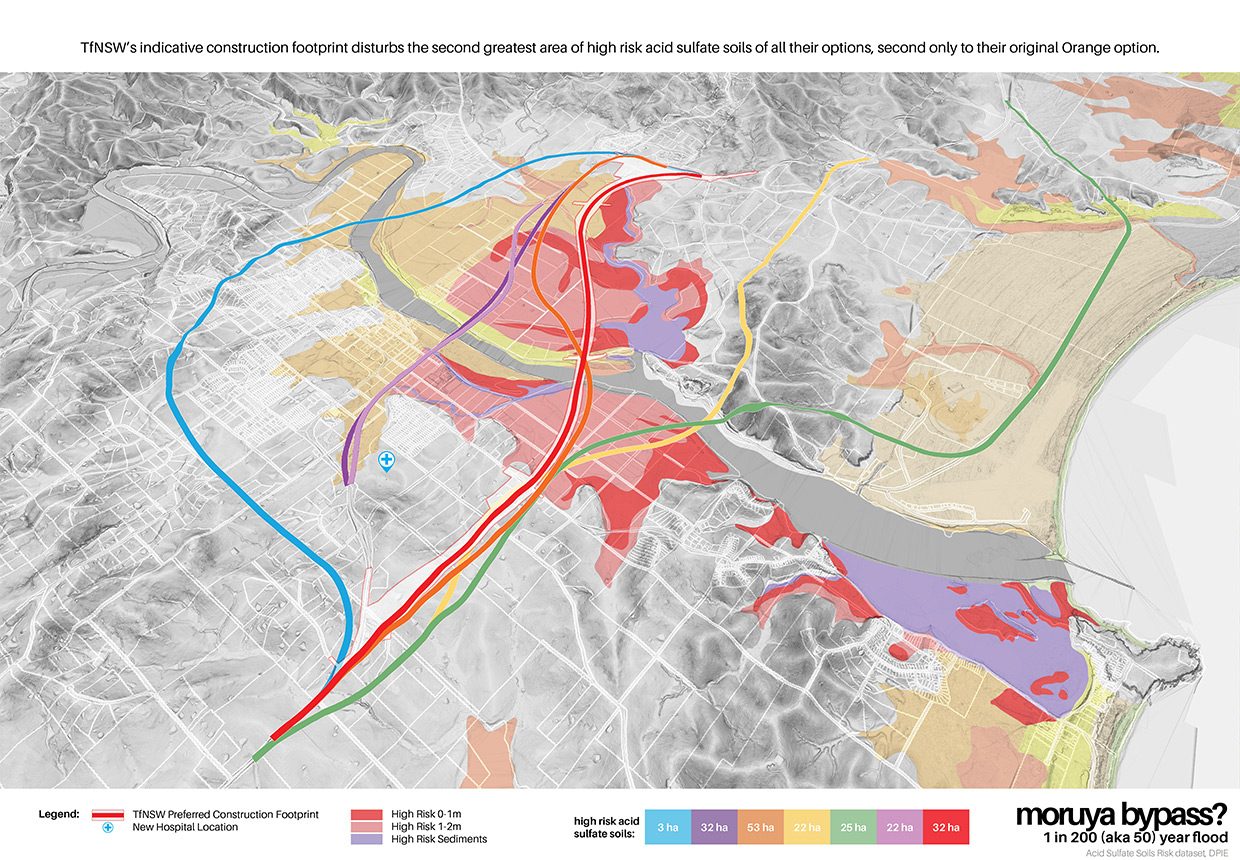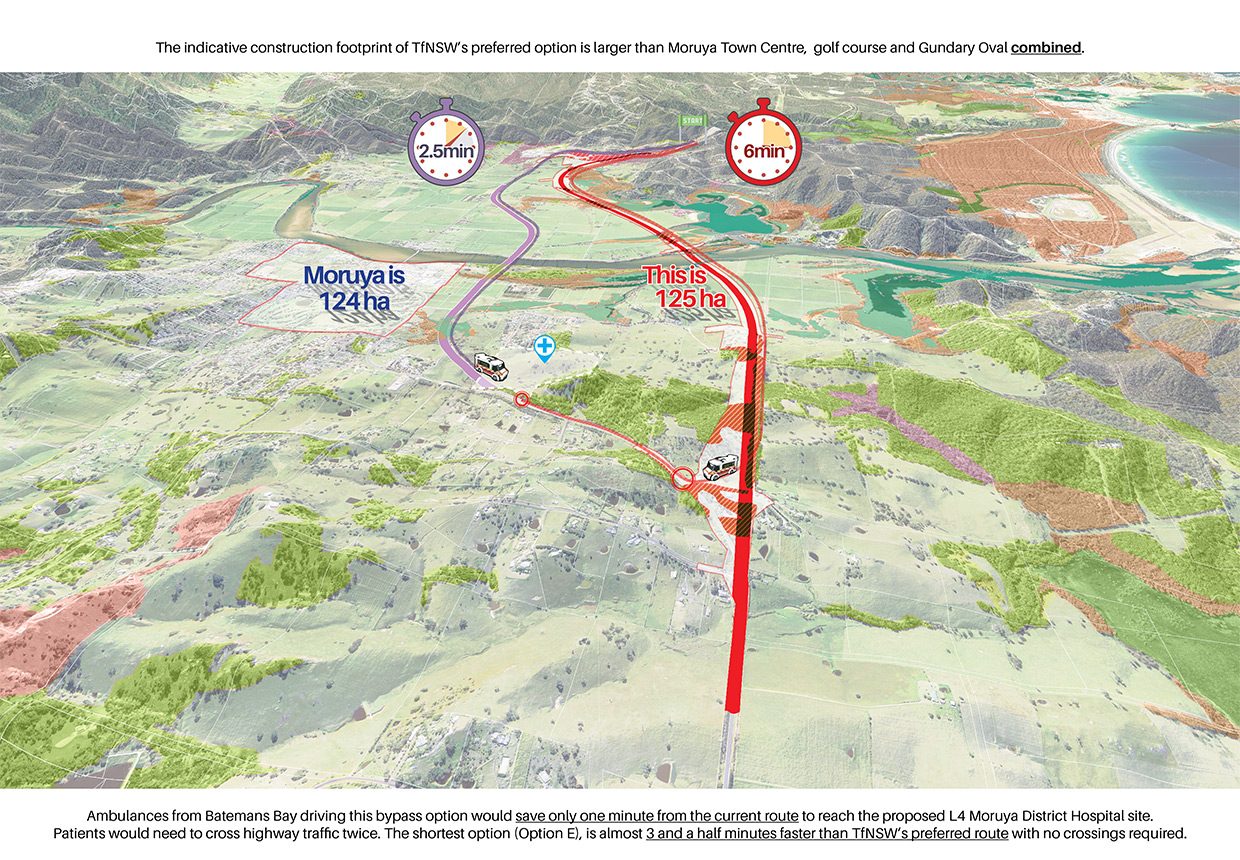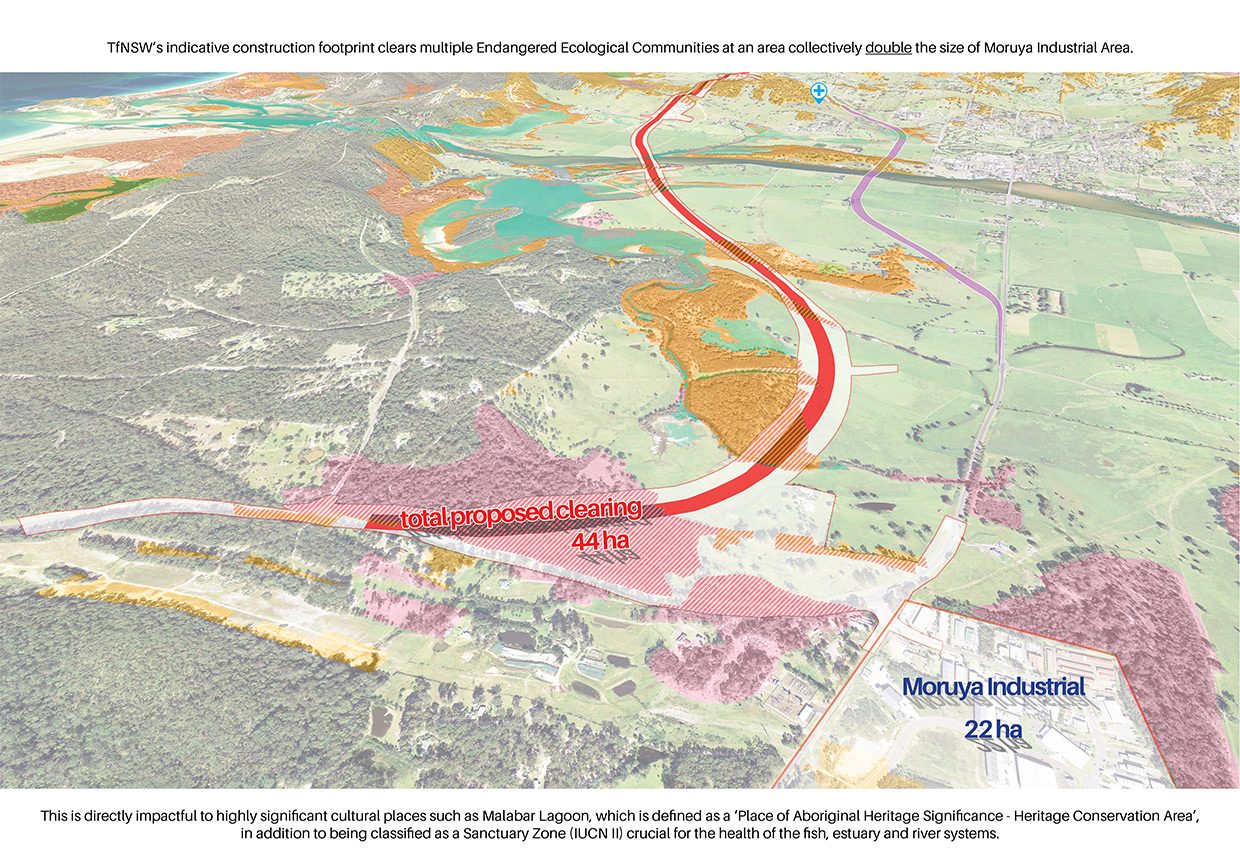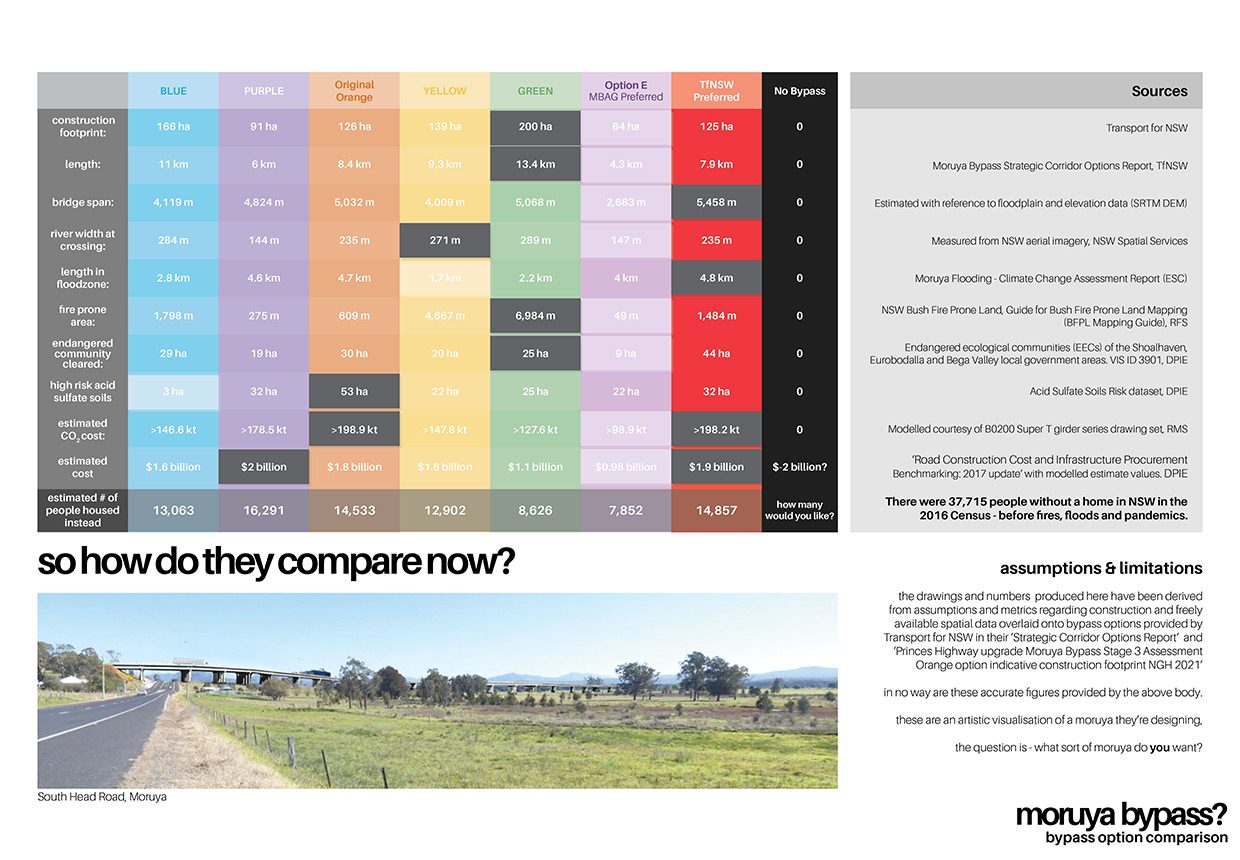⸺The Bypass⸺
The Background
The community was given ONE week’s notice for this second round of consultation which consisted of 2 community information sessions and 2 information stalls at the weekly Moruya markets. We then had ONE month to respond to the Moruya Bypass Strategic Corridor Options Report. However, following requests from the Moruya Bypass Action Group for more information about the selection process, a 2 week extension was granted to a small number of people and a 14 page Frequently Asked Questions Strategic Options document was placed on the Transport for NSW website. However, it did not provide all the information sought by the community.
The Moruya Bypass Action Group made a detailed submission to Transport for NSW on the Options report and FAQs document. We noted that no detailed technical assessments or costings had been undertaken to compare the short-listed route options and that the preferred route was chosen based only on a very questionable values assessment. We also noted that just ONE of the 5 workshops to select the bypass route included community members. This consisted of only THREE people who were not necessarily representative of our community and who were sworn to secrecy by being forced to sign a confidentiality agreement. We also pointed out that of the FAQS Strategic Options Process document states that no clearly preferred route came out of these workshops and that Transport for NSW selected their preferred Orange route based on very dubious and arbitrary rankings.
More than 9 months after this second community consultation period closed, we were still waiting for Transport for NSW to release their promised consultation report. We wrote to Transport for NSW asking for the report because we were interested to learn about the feedback the community provided on the preferred Orange bypass route, given the response to our petition shows that there are a growing number of people in our community who do not support this route.
Meanwhile we learnt that Transport for NSW had been contacting landholders since July to negotiate specific route alignments through their properties and, in some cases, property acquisition. How can this be? What was the point of the community consultation if Transport for NSW already had a definite route in mind? Why have an Options Report when in fact there never were any options as far as Transport for NSW was concerned? This whole process looked like a cynical exercise in going through the motions of consulting the community without giving them sufficient information and actually listening to what they have to say, let alone acting on it.
The Moruya Bypass Action Group made a detailed submission to Transport for NSW on the Options report and FAQs document. We noted that no detailed technical assessments or costings had been undertaken to compare the short-listed route options and that the preferred route was chosen based only on a very questionable values assessment. We also noted that just ONE of the 5 workshops to select the bypass route included community members. This consisted of only THREE people who were not necessarily representative of our community and who were sworn to secrecy by being forced to sign a confidentiality agreement. We also pointed out that of the FAQS Strategic Options Process document states that no clearly preferred route came out of these workshops and that Transport for NSW selected their preferred Orange route based on very dubious and arbitrary rankings.
More than 9 months after this second community consultation period closed, we were still waiting for Transport for NSW to release their promised consultation report. We wrote to Transport for NSW asking for the report because we were interested to learn about the feedback the community provided on the preferred Orange bypass route, given the response to our petition shows that there are a growing number of people in our community who do not support this route.
Meanwhile we learnt that Transport for NSW had been contacting landholders since July to negotiate specific route alignments through their properties and, in some cases, property acquisition. How can this be? What was the point of the community consultation if Transport for NSW already had a definite route in mind? Why have an Options Report when in fact there never were any options as far as Transport for NSW was concerned? This whole process looked like a cynical exercise in going through the motions of consulting the community without giving them sufficient information and actually listening to what they have to say, let alone acting on it.
Compare the Bypass Options
(slide presentation)
Use dots to scroll and navigate the slides.
A better alternative
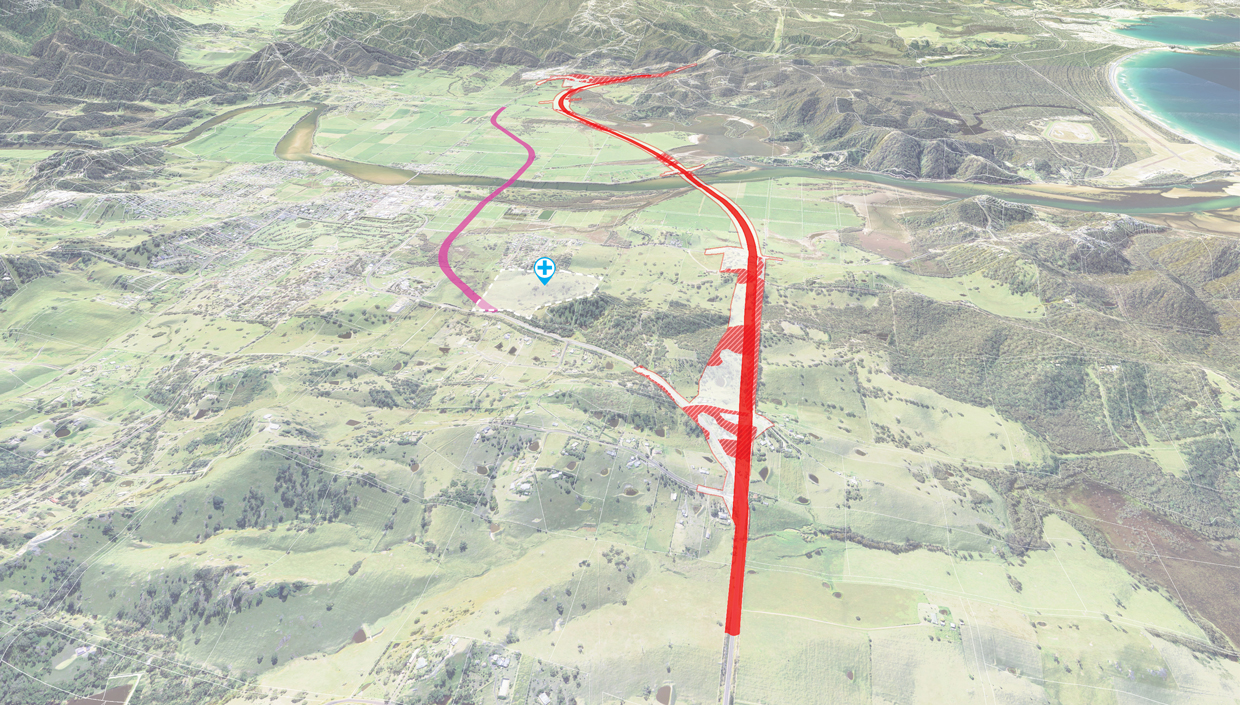
There are alternatives to Transport for NSW’s preferred Orange option. These are shorter and have far fewer impacts on people, property, agricultural land and the environment. They would also be less costly, use fewer resources and be less disruptive than the Orange route.
They meet all the criteria that the Orange route does for safety, resilience, liveability, sustainability, connectivity and accessibility and in some instances they outperform the Orange route (e.g. accessibility to the new Eurobodalla hospital and sustainability).
The Moruya Bypass Action Group believes that Option E shown on page 71 and described on page 72 of Transport for NSW’s Options Report is a better choice. It is only 4 kms long and starts just south of Larrys Mountain Road, crossing the Moruya River at the far end of Riverside Park and passing east of Moruya TAFE to join the Princes Highway just south of Bergalia St near the new hospital site. Option E is described as the Pink option on page 13 of their FAQS Strategic Options Process. This route impacts fewer properties and agricultural land than the Orange route, it also will serve local businesses better because it is closer to town and will require less clearing and disruption to our fragile environment on the riverflats and surrounding hills. It was short-listed by Transport for NSW who moved the start north to Shelley Road, and renamed it the Purple option on page 75 of their Options report.

